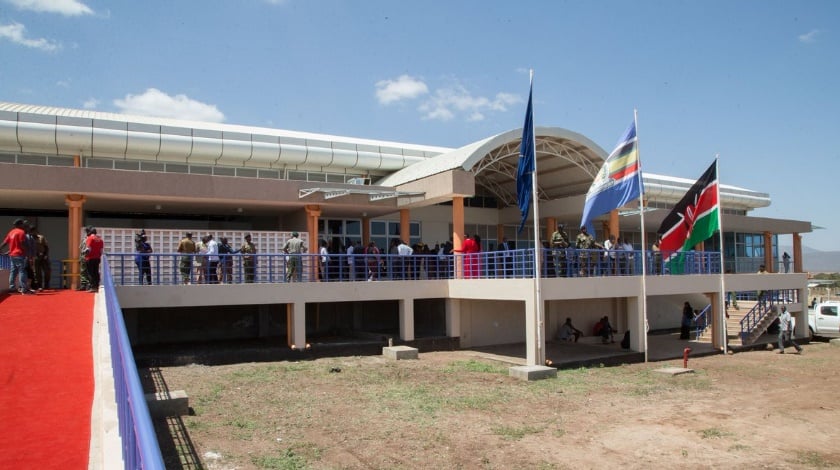Photo: @ Twitter / Mpkamande
Reading Time: 2 minutesIsiolo International Airport was declared ready for business in February following a $270 million upgrade. It is one of the key ‘Vision 2030’ infrastructure projects under the Kenyan transport pillar, in which the resort town of Isiolo becomes the centre of the Lamu Port South Sudan Ethiopia Transport Corridor (LAPPSET).
The LAPPSET project includes a road, rail and pipeline to be built from Lamu, on the northern coast, to Isiolo town, strategically located at the centre of Kenya. It will have one transport link to Merrille, Ethiopia, and Juba, South Sudan, thus creating a significant demand for air services into Isiolo.
Kenya’s fifth international airport stands at 3,501 feet. It has a 1,400-metre asphalt runway, with a planned upgrade to make it 2,500 metres. The 4,500sqm passenger terminal is capable of handling 125,000 passengers annually.
Prior to the commissioning of the airport, several airlines, air operators and transport logistic firms were already showing interest. The key operational sector load will be for khat freight, which is currently exported in thousands of tonnes annually from Wilson Airport in Nairobi.
Just 35km from Maua in Meru County, the base of production of khat, it will be viable to use the airport to export the plant to Somalia and other markets, as opposed to transporting it 350km to Nairobi.
The opening of the airport will help relieve khat farmers, who have be suffering since the Netherlands and the United Kingdom both banned the import of the narcotic leaf, citing health concerns.
“The projects will add value to the lives of residents, attract investments, increase competitiveness and the ease of doing business,” said LAPSSET director general Silvester Kasuku.
The Northern Construction Company said that the airport project, including the terminal building, car park and administration block, had been completed and handed over early to the aerodrome operator – Kenya Airports Authority (KAA).
The first phase was handed over in February 2016, as the construction firm sought a two-month extension from KAA for work on the third phase, which comprises access roads and apron.
Airlines that have indicated their intension to operate to the airport include East African Safari Air Express, whose operations director, George Kivindyo, indicated that it would market the airport prior to its opening.
Security in and around the Isiolo International Airport has also been beefed up with a team comprising officials of KAA, the Kenyan Civil Aviation Authority (KCAA), the national police service and the county commissioner.
County Commissioner George Natembeya indicated that, with the airport being a critical security facility, his committee would respond to any emergencies that may arise, adding that the airport was well secured since police had been deployed to guard all entry and exit points and the entire facility.
However, he expressed concern over the surrounding hills, saying they had security implications. He has presented comprehensive security plan proposals for approval by central government to address operational concerns.
The opening of the new facility marks a new era in the development of Kenyan airports, with the operational plan making both logistical and economic sense and the location being factored into the development blueprint of the country and other planned transport networks – road, railway and pipeline transport network from Lamu to Ethiopia and South Sudan.
The airport’s operational economic turnaround is expected faster than other airports in the country, like Eldoret and Kisumu, both of which have received major upgrades but are yet to be operationally financially self-sufficient. They are subsidised from the commercially viable airports of JKIA, Wilson and Moi International Airport – Mombasa.

